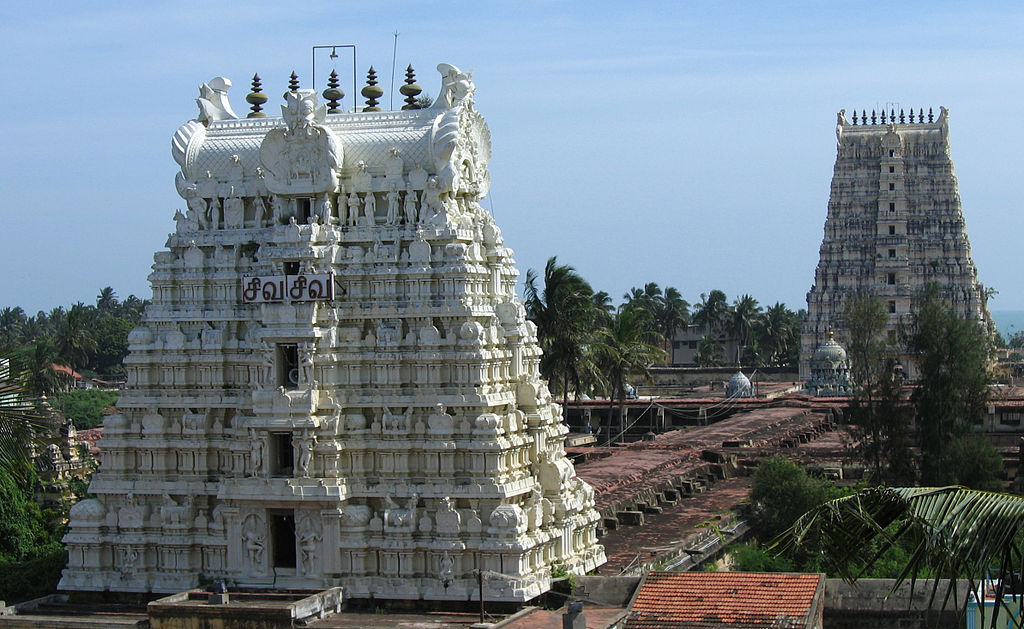ॐ श्री गुरुभ्यो नमः ॐ श्री शिवानन्दाय नमः ॐ श्री चिदानन्दाय नमः ॐ श्री दुर्गायै नमः
Source of all Images in this Blog-post : Google Images : ‘Google Image Search’ will reveal the multiple sources of every single image shared in this Blog. For more details, kindly see ‘Disclaimer‘
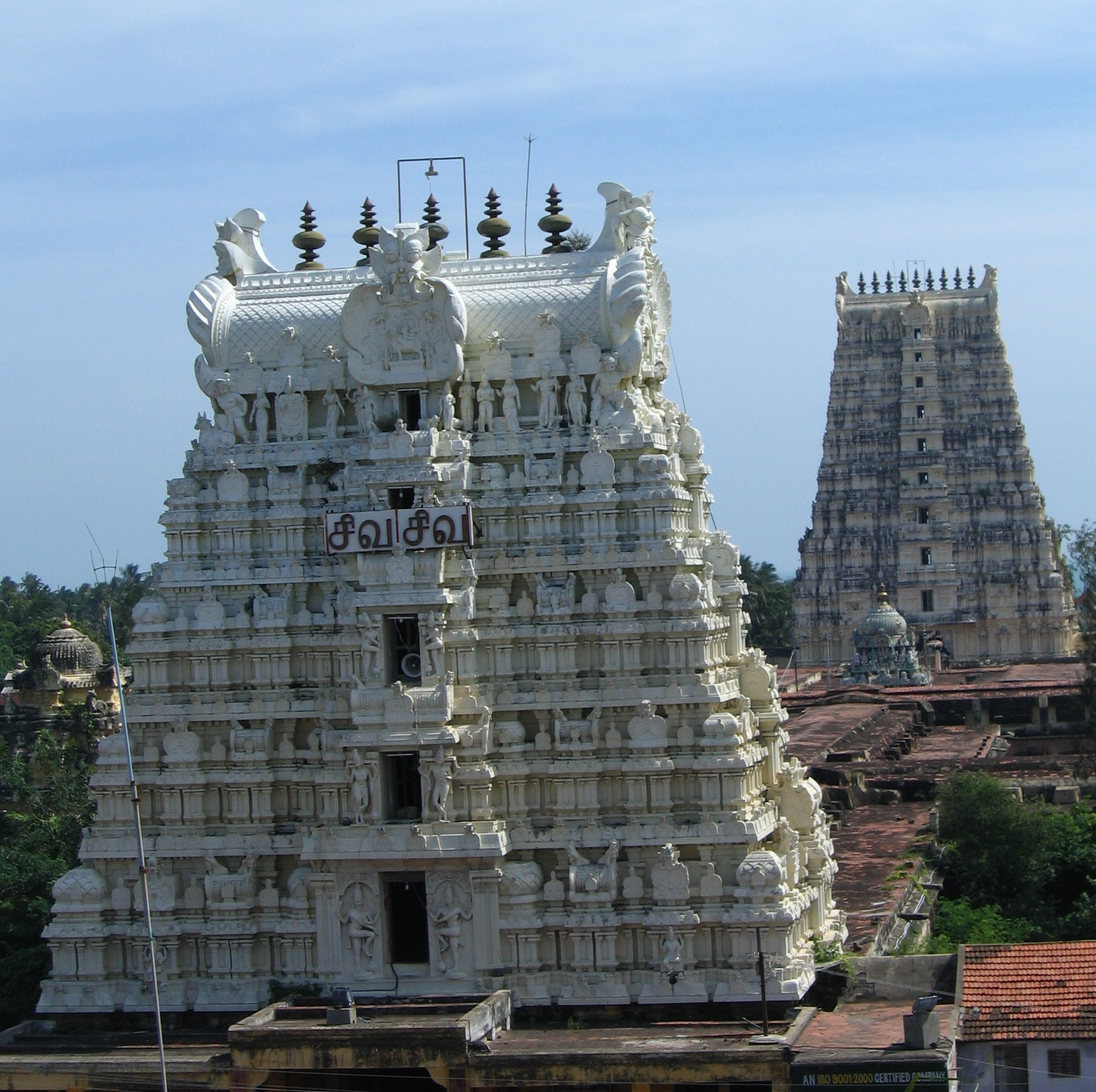
Ramanathaswamy Temple is a Hindu temple dedicated to the Hindu God Shiva located on Rameshwaram island in the Indian state of Tamil Nadu. It is also one of the twelve Jyotirlinga temples of India.

It is one of the 274 Paadal Petra Sthalams as well, where the three of the most revered Nayanars (Tamil Saivite saints), Appar, Sundarar and Tirugnana Sambandar, have glorified the temple with their sacred devotional songs.
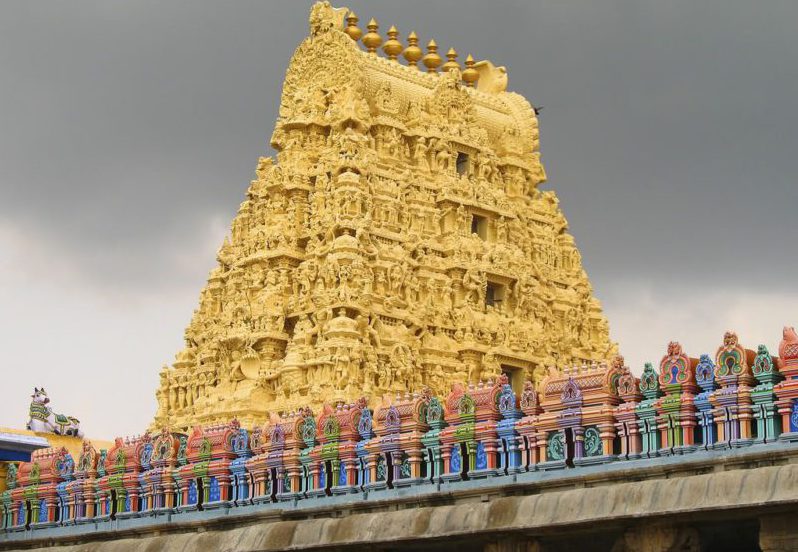
The temple was expanded during the 12th century by Pandya Dynasty, and its principal shrines and Sanctum Sanctorum were renovated by the Jaffna kingdom of Shri Lanka.
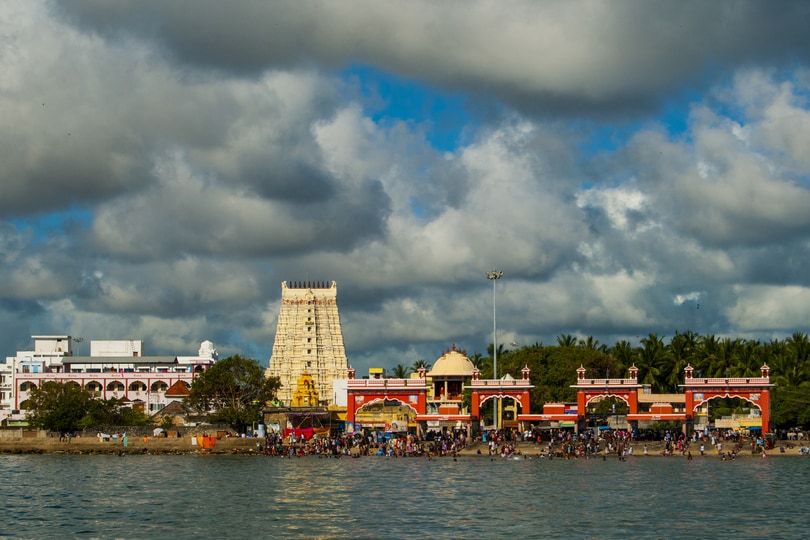

The temple has the longest corridor among all Hindu temples in India. The temple is located in Rameshwaram considered a very holy pilgrimage site for Shaivites, Vaishnavites and Smarthas alike.

The presiding deity, the Lingam of Ramanathaswamy (Shiva), was established and worshiped by Rama before crossing his bridge to Lanka.

Legend :
According to the Hindu epic Ramayana, Rama, the seventh Avatara of Vishnu, the Hindu God of preservation, prayed to God Shiva to absolve him of the sin committed during his war against the demon king of Sri Lanka Ravana , who was a Brahmin.
Rama wanted to have a large Lingam to worship Shiva. He directed Hanuman, the lieutenant in his army, to bring a Lingam from the sacred Himalayas.
When there was delay by Hanuman in bringing the Lingam, Rama built a small Lingam out of the sand available in the seashore, which is believed to be the Lingam in the present Sanctum.
Architecture :
The primary deity of the temple is Ramanathaswamy (Shiva) in the form of Lingam. There are two Lingams inside the Sanctum – one built by Rama from sand, that is the main deity Ramalingam of the temple, and the one brought by Hanuman from Kailash called Vishwalingam..

Rama instructed that the Vishwalingam should be worshipped first since it was brought by his ardent devotee Hanuman, and the tradition continues even today.
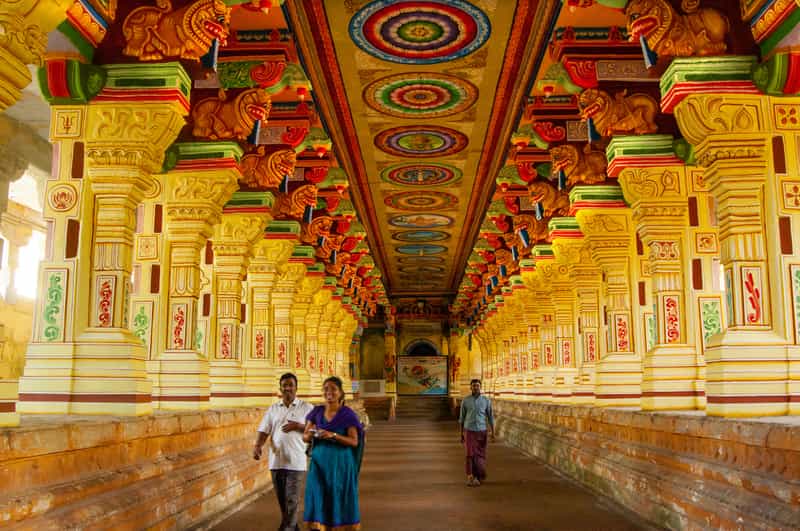
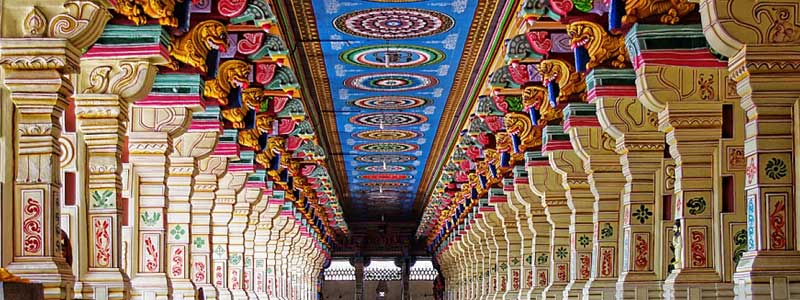
Like all ancient temples in South India, there is a high compound wall on all four sides of the temple premises measuring about 865 feet from east to west, and one of 657 feet from north to south with huge towers (Gopurams) to the east and the west, and gate towers to the north and south.
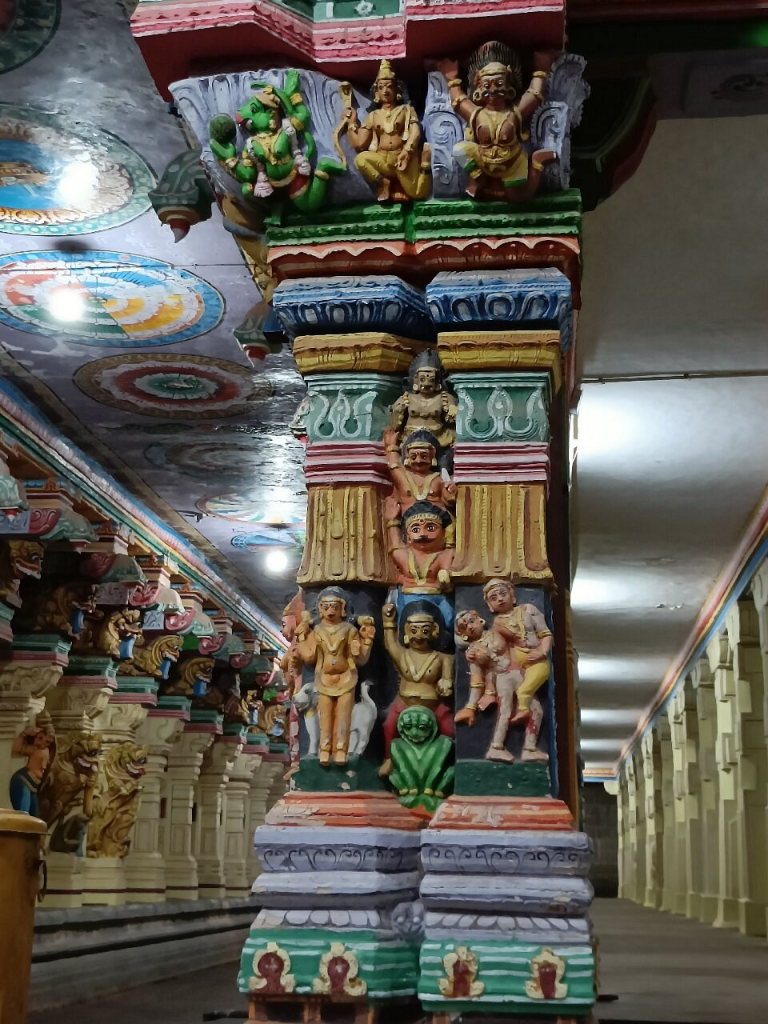
The temple has strikingly long corridors in its interior.
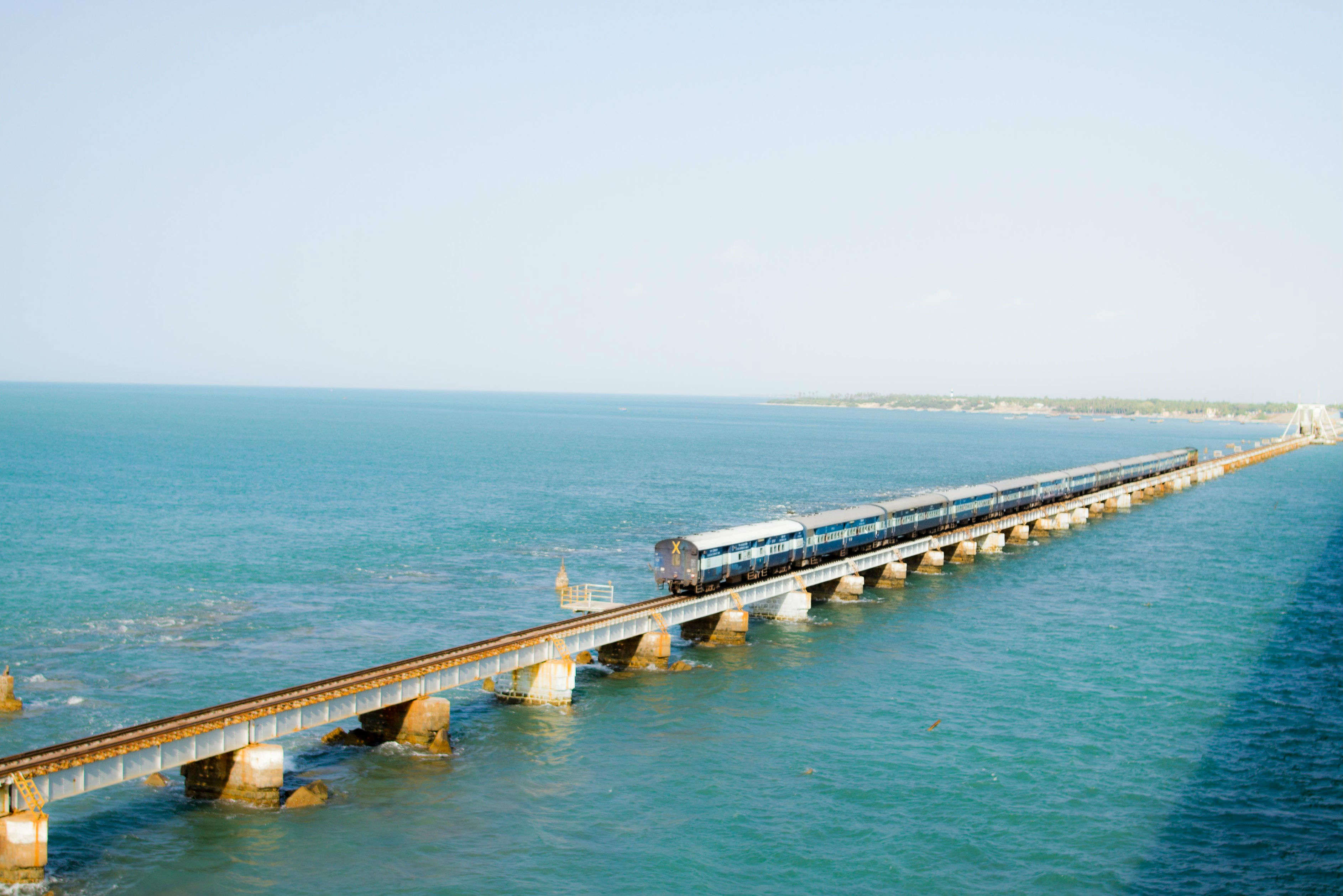
The outer set of corridors is reputed to be the longest in the world, measuring about 6.9 m in height, 400 feet each in the east and west and about 640 feet in the north and the south.
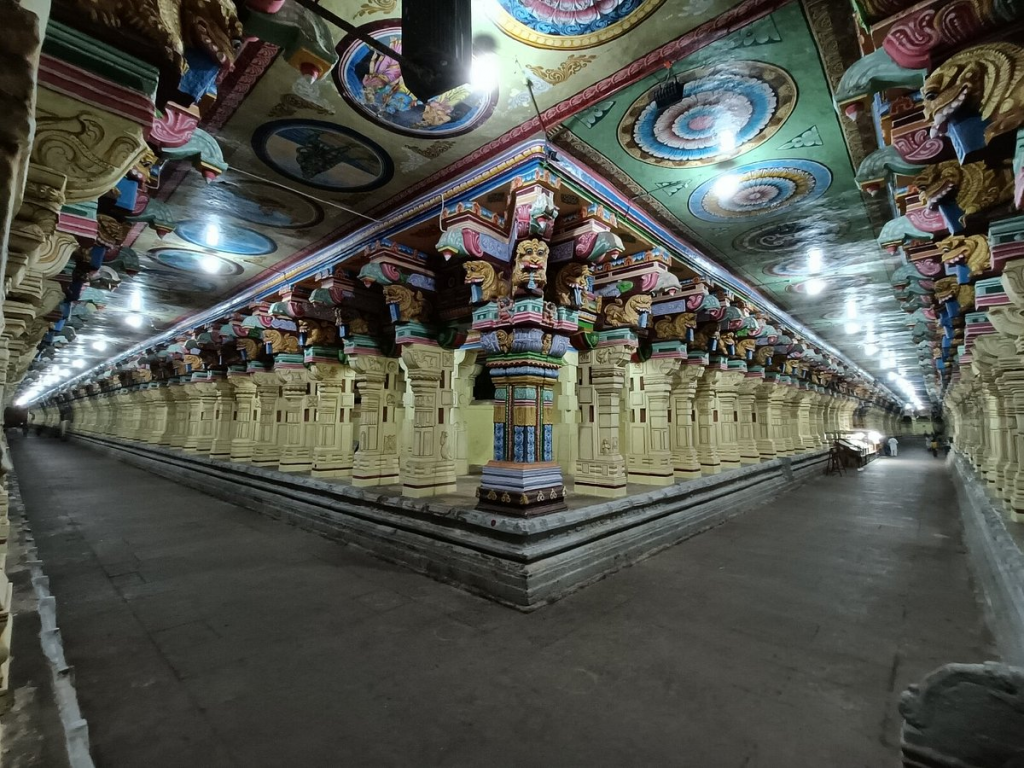
The inner corridors are about 224 feet each in the east and the west and about 352 feet each in the north and the south. There are about 1212 pillars in the outer corridor. The main tower or Rajagopuram is 53 m tall.

There are separate shrines for Ramanathaswamy and his consort Goddess Parvathavardhini separated by a corridor. And there are separate shrines for the Goddess Vishalakshi, Vishnu and Ganesha.
There are various halls inside the temple, known as Anuppu Mandapam, Sukravara Mandapam, Setupati Mandapam, Kalyana Mandapam, and Nandi Mandapam.
There are sixty-four Tīrthas (holy water bodies) in and around the island of Rameswaram.
According to the Hindu scripture Skanda Puraṇa, twenty-four of them are important. Bathing in these Tīrthas is a major aspect of the pilgrimage to Rameshwaram and is considered equivalent to severe penance.
Twenty-two of the Tirthas are within the Ramanathasvami Temple. The first and the major one is called Agni Theertham.
Char Dham :
The temple is one of the holiest Hindu Char Dham (four sacred sites of Hinduism) comprising Badrinath, Puri, Dwarka and Rameshwaram.
JyotirLinga :
As per Shiva Mahapurana, once Brahma (the Hindu God of creation) and Vishnu (the Hindu God of preservation) had an argument in terms of supremacy of creation. To test them, Shiva pierced the three worlds as a huge endless pillar of light, the Jyotirlinga.
Vishnu and Brahma split their ways to downwards and upwards respectively to find the end of the light in either directions.
Brahma lied that he found out the end, while Vishnu conceded his defeat. Shiva appeared as a second pillar of light and cursed Brahma that he would have no place in ceremonies while Vishnu would be worshipped till the end of eternity.
The Jyotirlinga is the supreme indivisible reality, out of which Shiva partly appears. The Jyothirlinga shrines, thus are places where Shiva appeared as a fiery column of light.
Originally, there were believed to be 64 Jyothirlingas of which 12 are considered to be very auspicious and holy.
Each of the twelve Jyothirlinga sites take the name of the presiding deity, each considered a different manifestation of Shiva. At all these sites, the primary image is the Lingam , symbolizing the infinite nature of Shiva (without beginning or end).
The twelve Jyothirlingas are Somnath in Gujarat, Mallikarjuna at Srisailam in Andhra Pradesh, Mahakaleswar at Ujjain in Madhya Pradesh, Omkareshwar in Madhya Pradesh, Kedarnath in Himalayas, Bhimashankar in Maharashtra, Viswanath at Varanasi in Uttar Pradesh, Triambakeshwar in Maharashtra, Vaidyanath at Deoghar in Jharkhand, Nageswar at Dwarka in Gujarat, Rameshwar at Rameswaram in Tamil Nadu and Grishneshwar at Aurangabad, Maharashtra.
The Rameshwaram temple is the southern most of all the twelve Jyothirlingas.
Read more about this Jyotirlinga temple on its Wikipedia page by clicking this link
